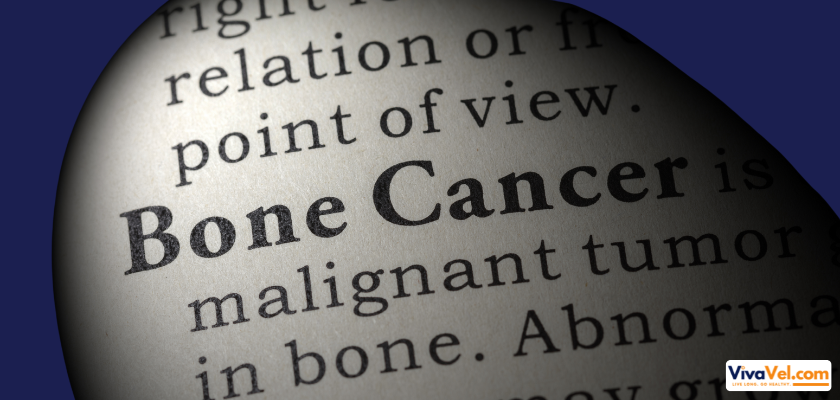
Home / Information / Blog / Blog Detail

Bone cancer is a rare but serious condition that affects the bones, leading to pain, fractures, and other complications. Although it can occur at any age, it is more common in children, teenagers, and older adults. Understanding its symptoms, causes, and available treatment options can help in early detection and better outcomes.
What is Bone Cancer?
Bone cancer occurs when abnormal cells grow uncontrollably in the bone tissue. It can be primary bone cancer, which originates in the bone, or secondary bone cancer, which spreads to the bone from another part of the body (metastatic cancer). The most common types of primary bone cancer include:
Osteosarcoma typically affects young adults and children and often occurs in the long bones.
Ewing Sarcoma – Affects children and young adults, usually forming in bones of the pelvis, legs, or arms.
Chondrosarcoma – Common in adults, it develops in cartilage cells.
Chordoma – A slow-growing cancer found in the spine and base of the skull.
Symptoms of Bone Cancer
Bone cancer symptoms may vary depending on the location and stage of the disease. The most common signs include:
Persistent bone pain that worsens over time and is not relieved by rest.
Swelling or lumps in the affected area.
Fractures occur with minimal or no trauma.
Restricted movement if the cancer affects joints.
Fatigue and unintended weight loss in advanced stages.
If these symptoms persist, seeking medical attention is crucial for an accurate diagnosis.
Causes and Risk Factors
The exact cause of bone cancer is unclear, but certain risk factors may increase the likelihood of developing it:
Genetic Disorders – Conditions like Li-Fraumeni syndrome and hereditary retinoblastoma can increase risk.
Radiation Exposure – High-dose radiation therapy for other cancers may lead to bone cancer.
Paget’s Disease of Bone – A condition affecting bone remodeling, common in older adults.
Previous Cancer Treatments – Some chemotherapy drugs may contribute to the development of bone cancer.
Family History – Having a close relative with bone cancer may slightly increase the risk.
Diagnosis of Bone Cancer
Early detection is essential for effective treatment. Doctors use several methods to diagnose bone cancer:
X-rays – To identify abnormal bone structures or growths.
MRI and CT Scans – To determine the extent of the tumor and its spread.
Bone Biopsy – A sample of the affected tissue is examined under a microscope to confirm the cancer type.
Bone Scintigraphy (Bone Scan) – Detects bone abnormalities using a radioactive tracer.
Treatment Options
Treatment for bone cancer depends on its type, stage, and location. Common treatment approaches include:
Surgery
Surgical removal of the tumor is the primary treatment. In some cases, limb-sparing surgery can remove the cancer without amputation. However, in advanced cases, amputation may be necessary to prevent the spread of cancer.
Chemotherapy
Chemotherapy uses powerful drugs to destroy cancer cells. It is commonly used for osteosarcoma and Ewing sarcoma to shrink tumors before surgery or eliminate remaining cancer cells afterward.
Radiation Therapy
High-energy radiation targets and kills cancer cells. It is especially effective for Ewing sarcoma and chondrosarcoma, mainly when surgery isn’t an option.
Targeted Therapy & Immunotherapy
Advanced treatments like targeted therapy and immunotherapy help block specific molecules responsible for cancer growth or boost the immune system to fight cancer more effectively.
Preventing Bone Cancer
While bone cancer cannot always be prevented, certain lifestyle choices and precautions can help lower risk:
Avoid excessive radiation exposure unless medically necessary.
Stay physically active and maintain bone health with a calcium-rich diet.
Monitor genetic risks if there is a family history of bone cancer.
Seek medical attention for persistent bone pain or unusual swelling.
Final Thought:
Bone cancer is a challenging condition, but early detection and advanced treatment options have improved survival rates. Understanding the symptoms, causes, and treatment possibilities empowers individuals to seek timely medical care. Raising awareness about bone cancer can help improve outcomes and offer hope to those affected by this disease.
Help Spread Awareness!
Share this blog with your family and friends to learn about Brain cancer prevention and early detection.
With VivaVel, stay informed and stay healthy!


Cancer is one of the most daunting health challenges of our time. Still, advancements in medicine and technology are transforming how it is diagnosed and treated. Understanding cancer and its various types is crucial for health tourists seeking specialized care to make informed decisions about treatment destinations. This blog explores cancer, its different types, and why health tourism can benefit patients.

Lung cancer is one of the most prevalent and serious forms of cancer globally. It occurs when abnormal cells in the lungs begin to grow uncontrollably, leading to the formation of tumors that disrupt normal lung function. Early detection is vital for improving survival rates; however, lung cancer is often diagnosed at later stages due to its subtle initial symptoms. This article will examine the causes, symptoms, risk factors, treatment options, and preventive strategies associated with lung cancer.

Understanding Oral Cancer
Oral cancer is a serious health condition that affects the mouth, tongue, lips, and throat. It is one of the most common forms of cancer, with thousands of cases diagnosed globally each year. Early detection and treatment are crucial for improving survival rates.
STEP 1
Let us know your details and preferences. We maintain absolute data confidentiality. All your health records are safe, and privacy is maintained.
STEP 2
A dedicated counsellor will help you with the Best Hospital & Doctors at the lowest possible Prices.
STEP 3
While you decide on the treatment plan, we assist you with priority appointments, Visa, Documentation, Hotel & other Logistics.
STEP 4
Our team assists you with all your local requirements like Hospitalization, Hotel Stay, Transportation, Food, Forex, Lab Tests, Medicines, etc.
STEP 5
We ensure a smooth discharge process. We also assist you in tallying your bills at the hospital, all necessary documentation, and your return trip.
Happy Patient from Bangladesh | Gastroenteritis Treatment in Columbia Asia Hospital, India

"VivaVel" has truly made a life-changing impact on our lives during a challenging time. My wife was diagnosed with Polycystic Ovarian Disease (PCOD), and despite consulting three different doctors in Bangladesh, we were unsatisfied and uncertain about the way forward. It was a confusing and challenging phase until a friend recommended VivaVel.
From the moment "I contacted them", VivaVel provided exceptional support and guidance. They arranged telemedicine consultations with two renowned international doctors, giving us the confidence to make an informed decision. After careful consideration, we selected one of the doctors for my wife's treatment.
VivaVel's assistance went above and beyond our expectations. They helped us with critical processes like obtaining a medical visa invitation letter, visa processing, and coordinating my wife's admission to "Artemis Hospital" in Delhi. They even suggested comfortable accommodations for me as a patient attendant.
What truly stood out was their unwavering support throughout our journey. The "VivaVel team" was always just a phone call away, offering guidance and reassurance during our stay in Delhi. Their professionalism and dedication to helping patients and their families are truly commendable.
I am incredibly grateful for the care and support from "VivaVel." They were a beacon of hope for us during this difficult time, and I sincerely hope they continue their outstanding service to help more needy patients.
Thank you, "VivaVel," for being there for us every step of the way!
Mr. Hoque, Dhaka, Bangladesh
Patient name: Shanta Islam, Dhaka, Bangladesh.

Note : VivaVel does not provide medical advice, diagnosis or treatment. The services and information offered on www.vivavel.com are intended solely for informational purposes and cannot replace the professional consultation or treatment by a physician. All Copyrights are reserved with VivaVel. VivaVel does not allow copying and cloning of its webpages and contents. VivaVel reserves the right to follow the legal procedures to protect its intellectual property.
Copyright © 2025 VivaVel.com . All Rights Reserve.





